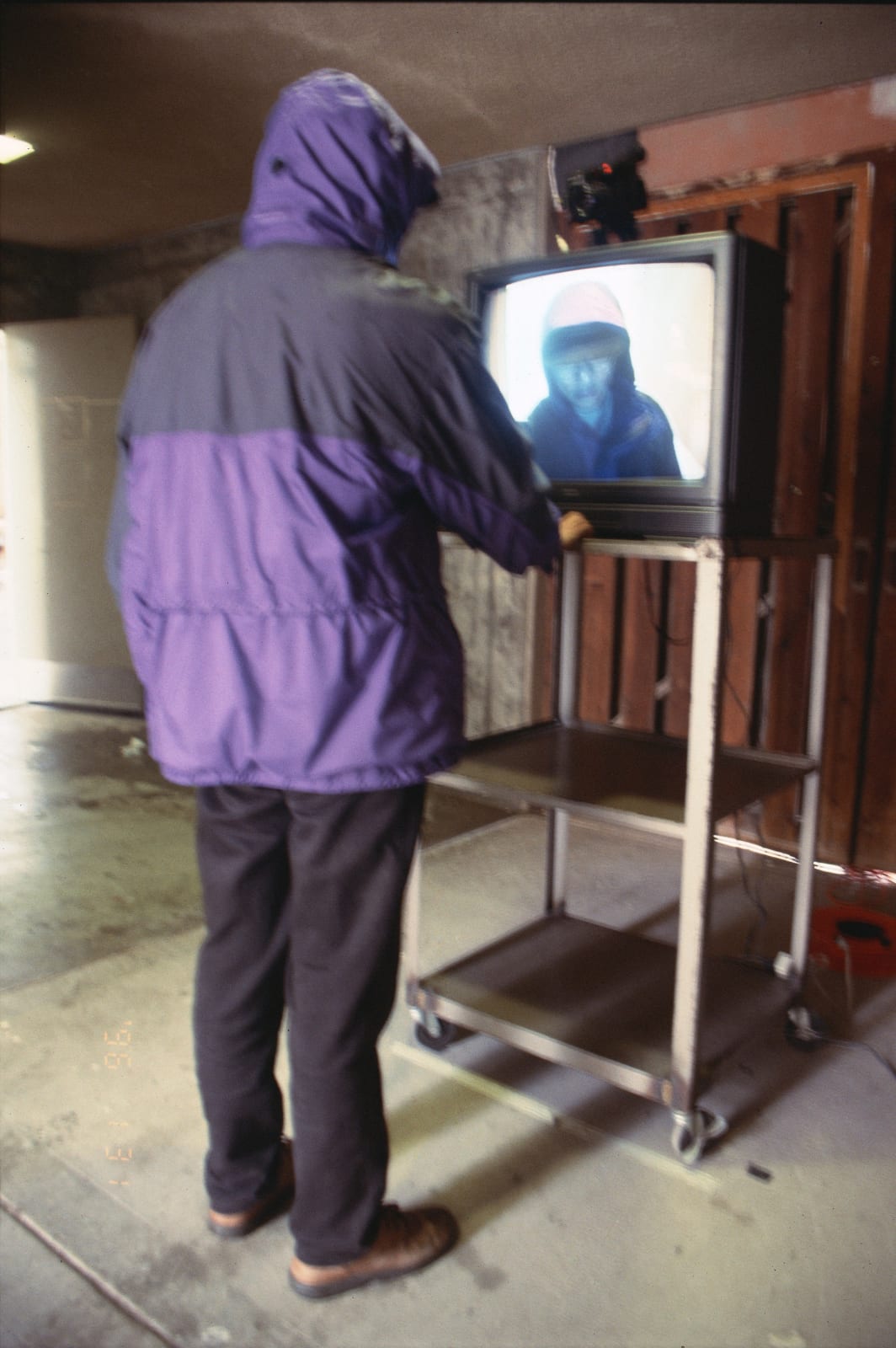 Process photograph 過程影像
Process photograph 過程影像
 Process photograph 過程影像
Process photograph 過程影像
 Process photograph 過程影像
Process photograph 過程影像
 Process photograph 過程影像
Process photograph 過程影像
 Process photograph 過程影像
Process photograph 過程影像
Shi Jin-Hua
Further images
I then went to UC Irvine to pursue further studies in Master of Fine Arts. In the atrium of my department, I set up two television at the two ends of the atrium. The volume of the television was set at “0,” while there was a Hi8 camcorder with wide-angle lens on top. The scenes captured by the camcorder were displayed on the television. I would walk to and fro between the two sets of televisions and camcorders, and whenever I came to one television, I would turn up the volume by one level, and then turn back and walk towards the other television to do the same thing. From the television screen, once could see a man who kept walking forward, turning the volume button, turning away, and then walking back again. Because of the vicinity of the televisions and camcorder, feedback was generated as the volume became louder and louder. As I turned up the volume, the feedback also became louder and more piercing to the ear. I turned up the volume to the highest level of “63,” and then started turning down the volume as I continued to walk to and fro between the two televisions. The noise generated died down and became silent as the volume of the two televisions became gradually lower. The performance ended when the volume was turned back to “0” again.
I have always been surprised and fascinated by the invention and the existence of the ATM. When users come to the machine and press a button, they leave the camcorder an overlooking, wide-angle and close-up footage of a person. Each time a new user uses the machine, this kind of image is recreated. This is a phenomenon unique to our times. I came up with three to four similar projects of the sort, the first of which is this work which consists of walks between two simulated ATM. With the increasingly louder noise, we aware of how our behaviors in the face of the ATM. Yet with continuous walks, the noise peaked and then died down again, letting us experience greater tranquility and greater ease when compared to the silence before.
我後來到了美國加州大學爾灣分校藝術創作研究所讀書,我在系裡面中庭的兩端安置了兩組電視機和推架,電視的音量調在最小「0」的位置上,並於電視上面架一台配有廣角鏡頭的Hi8 錄影機,該錄影機俯視所攝的影像串連顯示在電視螢幕上。我在兩組電視、錄影機之間,中庭的兩端不斷往返,每當抵達電視機前時,就按高電視的音量一級,然後轉身走回另一端。電視機螢幕上所顯示的,是一個不斷走近、按鈕、離開、又走近的人物影像。由於錄影機與電視機的過近距離使二者發生反饋作用,這種情形持續著,隨著往返中逐漸調高的電視音量,反饋的噪音也愈來愈大、愈來愈刺耳,直到按至電視的最大音量「63」。之後每次走到電視機前時,就開始按低音量一級。於是噪音開始在以後的往返中逐漸減弱,最後終於回歸沈寂。當音量顯示降至「0」時,行為結束。
我對自動提款機的發明與存在一直保有高度的驚訝與興趣。我們到一個機器前面,按下按鍵,總會留下一種俯視、廣角又逼近的影像,然後重複再來。這種視象是我們這個時代的獨創,我前後構思了三到四次關於此類的作品,這件模擬在兩個提款機之間步行的作品是其中的第一件。隨著逐漸升高的噪音,讓我們意識到面對自動提款機這類機器的行為,但隨著持續的往返,到達高峰的噪音漸漸小聲,我們甚至經驗到比之前無聲更大的安寧與緩慢。
◆〈取款的人〉1996|過程影像、錄像、文件
Publications
2013 “Shi Jin-Hua”, Mind Set Art Center, Taiwan2013 《石晉華》,安卓藝術股份有限公司,台灣




